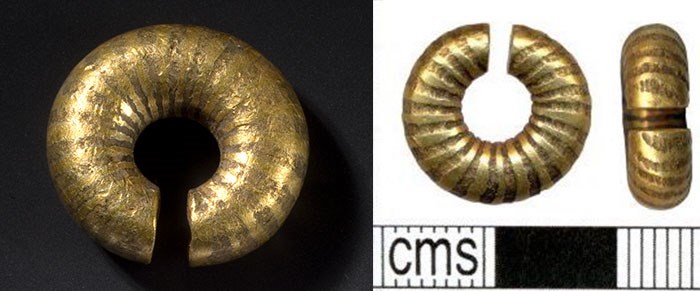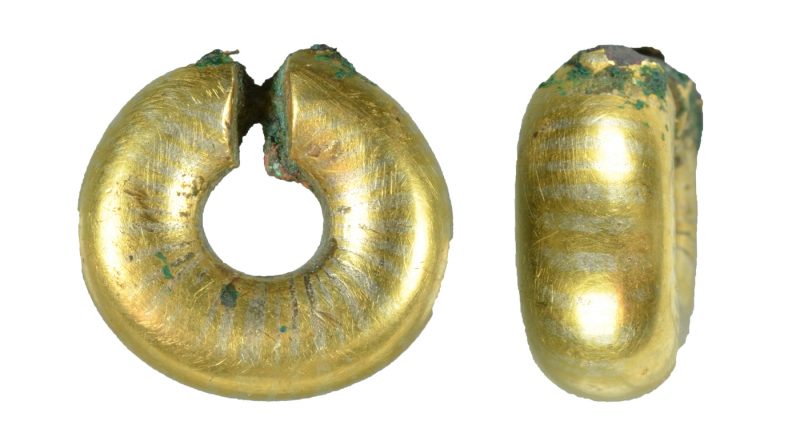Detectorist donates find to museum
Detectorist Andrew Pegg found this penannular ring in November 2018 near Leiston, Suffolk. Andrew has decided to donate it to his local museum. The PAS ID is SF-45670E
Penannular rings of this form can be either solid gold or have a copper-alloy core as in Andrew’s find.
How was it made
It is thought that this type of ring begins as a bar of bronze to which gold foil is added before being bent into a hoop shape. These rings often have the striped pattern present in Andrew’s find. These stripes were probably formed using a technique known as “diffusion bonding”. Narrow strips of silver-rich gold were heated and applied to the surface of the hoop.
When new, the stripes on Andrew’s find would have been much more prominent as suggested by the similar rings below.
Use
Their use is the subject of debate. It is likely that they were some form of jewelry rather than currency. The PAS report suggests that they may be used as nose rings or earrings.
Dr Alison Sheridan suggests that, where the gap has been deliberately blocked up, the more plausible explanation is that they were worn as decorative hair rings.
The gap in Andrew’s find has been blocked up but it is not clear whether this was deliberate. Andrew tells me that he believes the copper alloy core has blown out and fused together.
References
Late Bronze Age penannular “hair ring” by Dr Alison Sheridan

Andrews find.
Photo: Suffolk County Council, CC By SA2.0
Two other penanular rings
Photo: PAS CC by 4.0
More news stories in the Detecting in the News Archive

